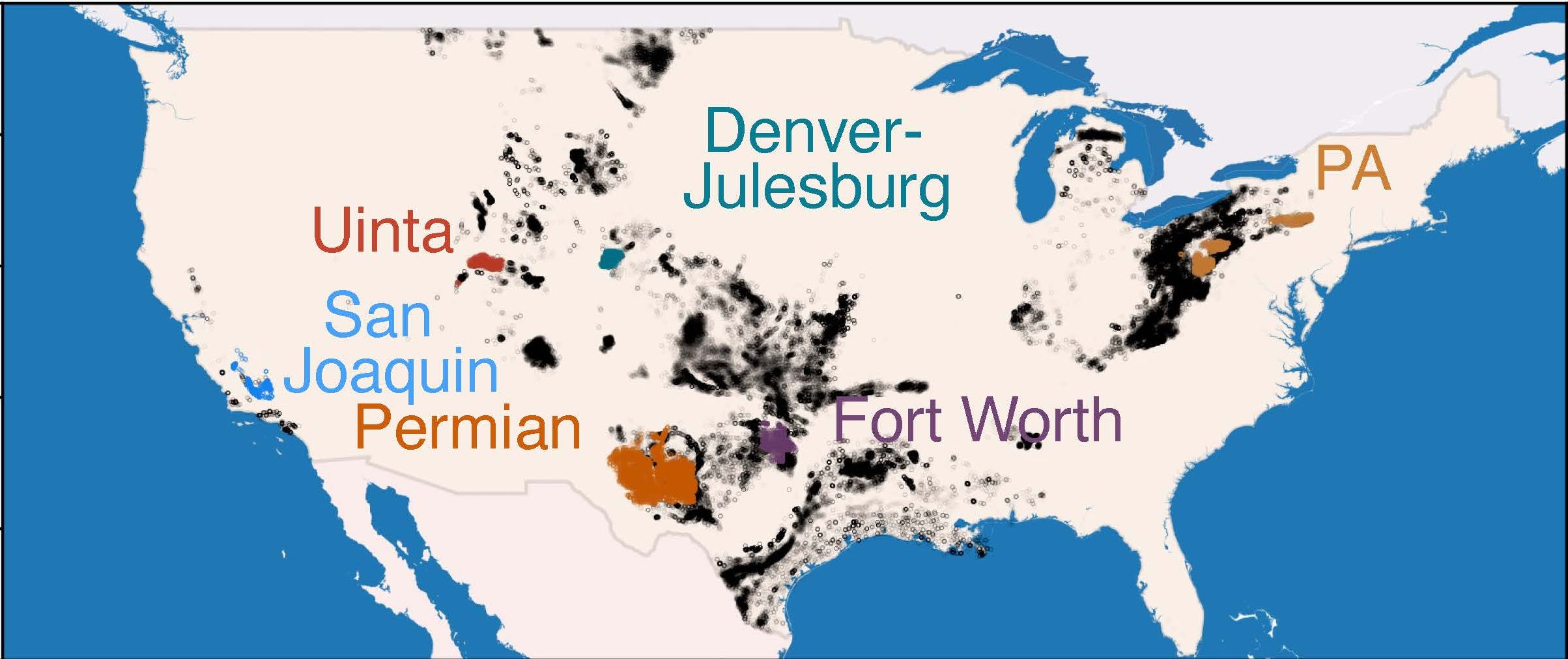Methane leaks in the US are worse than we thought
Methane emissions in the US are worse than scientists previously estimated, a new study has found.
The study, published today in Nature, represents one of the most comprehensive surveys yet of methane emissions from US oil- and gas-producing regions. Using measurements taken from planes, the researchers found that emissions from many of the targeted areas were significantly higher than government estimates had found. The undercounting highlights the urgent need for new and better ways of tracking the powerful greenhouse gas.
Methane emissions are responsible for nearly a third of the total warming the planet has experienced so far. While there are natural sources of the greenhouse gas, including wetlands, human activities like agriculture and fossil-fuel production have dumped millions of metric tons of additional methane into the atmosphere. The concentration of methane has more than doubled over the past 200 years. But there are still large uncertainties about where, exactly, emissions are coming from.
Answering these questions is a challenging but crucial first step to cutting emissions and addressing climate change. To do so, researchers are using tools ranging from satellites like the recently launched MethaneSAT to ground and aerial surveys.
The US Environmental Protection Agency estimates that roughly 1% of oil and gas produced winds up leaking into the atmosphere as methane pollution. But survey after survey has suggested that the official numbers underestimate the true extent of the methane problem.
For the sites examined in the new study, methane emissions appear to be higher than government estimates, on average," says Evan Sherwin, a research scientist at Lawrence Berkeley National Laboratory, who conducted the analysis as a postdoctoral fellow at Stanford University.
The data Sherwin used comes from one of the largest surveys of US fossil-fuel production sites to date. Starting in 2018, Kairos Aerospace and the Carbon Mapper Project mapped six major oil- and gas-producing regions, which together account for about 50% of onshore oil production and about 30% of gas production. Planes flying overhead gathered nearly 1 million measurements of well sites using spectrometers, which can detect methane using specific wavelengths of light.
 Sherwin et al., Nature
Sherwin et al., NatureHere's where things get complicated. Methane sources in oil and gas production come in all shapes and sizes. Some small wells slowly leak the gas at a rate of roughly one kilogram of methane an hour. Other sources are significantly bigger, emitting hundreds or even thousands of kilograms per hour, but these leaks may last for only a short period.
The planes used in these surveys detect mostly the largest leaks, above roughly 100 kilograms per hour (though they catch smaller ones sometimes, down to around one-tenth that size, Sherwin says). Combining measurements of these large leak sites with modeling to estimate smaller sources, researchers estimated that the larger leaks account for an outsize proportion of emissions. In many cases, around 1% of well sites can make up over half the total methane emissions, Sherwin says.
But some scientists say that this and other studies are still limited by the measurement tools available. This is an indication of the current technology limits," says Ritesh Gautam, a lead senior scientist at the Environmental Defense Fund.
Because the researchers used aerial measurements to detect large methane leaks and modeled smaller sources, it's possible that the study may be overestimating the importance of the larger leaks, Gautam says. He pointed to several other recent studies, which found that smaller wells contribute a larger fraction of methane emissions.
The problem is, it's basically impossible to use just one instrument to measure all these different methane sources. We'll need all the measurement technologies available to get a clearer picture, Gautam explains.
Ground-based tools attached to towers can keep constant watch over an area and detect small emissions sources, though they generally can't survey large regions. Aerial surveys using planes can cover more ground but tend to detect only larger leaks. They also represent a snapshot in time, so they can miss sources that only leak methane for periods.
And then there are the satellites. Earlier this month, Google and EDF launched MethaneSAT, which joined the growing constellation of methane-detecting satellites orbiting the planet. Some of the existing satellites map huge areas, getting detail only on the order of kilometers. Others have much higher resolution, with the ability to pin methane emissions down to within a few dozen meters.
Satellites will be especially helpful in finding out more about the many countries around the world that haven't been as closely measured and mapped as the US has, Gautham says.
Understanding methane emissions is one thing; actually addressing them is another matter. After identifying a leak, companies then need to take actions like patching faulty pipelines or other equipment, or closing up the vents and flares that routinely release methane into the atmosphere. Roughly 40% of methane emissions from oil and gas production have no net cost, since the money saved by not losing the methane is more than enough to cover the cost of the abatement, according to estimates from the International Energy Agency.
Over 100 countries joined the Global Methane Pledge in 2021, taking on a goal of cutting methane emissions 30% from 2020 levels by the end of the decade. New rules for oil and gas producers announced by the Biden administration could help the US meet those targets. Earlier this year, the EPA released details of a proposed methane fee for fossil-fuel companies, to be calculated on the basis of excess methane released into the atmosphere.
While researchers are slowly getting a better picture of methane emissions, addressing them will be a challenge, as Sherwin notes: There's a long way to go."